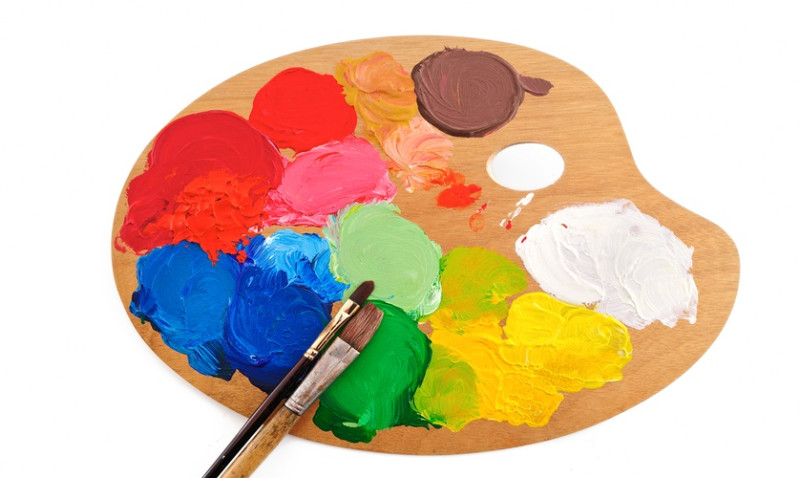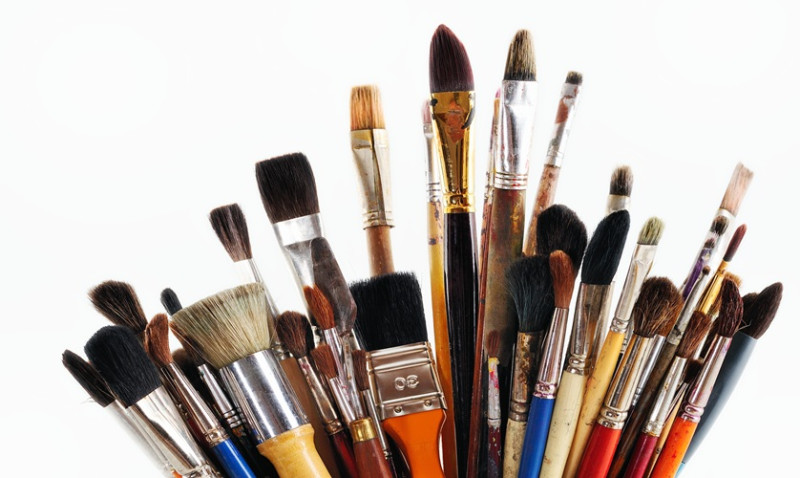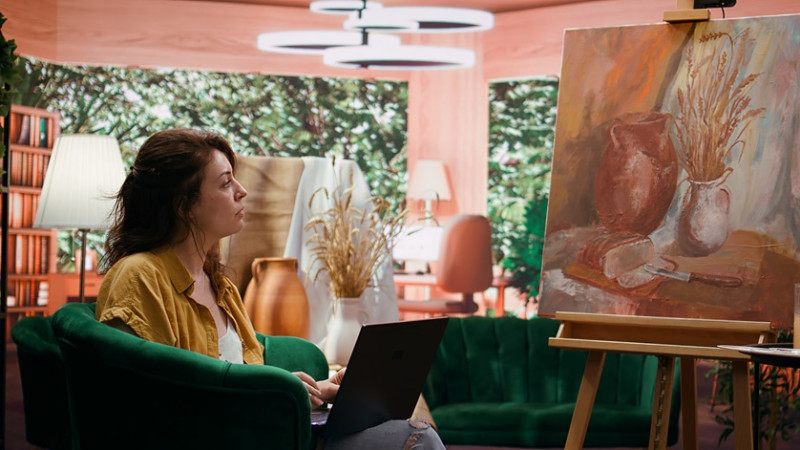
Whether you're a seasoned artist or just getting started, art fairs can be an incredible opportunity to grow your audience and boost your sales. With the right approach, these vibrant events can connect your artwork directly with DIY enthusiasts, architects, designers, professional tradespeople, and homeowners looking for unique pieces to enhance their interiors. However, simply attending isn't enough — standing out requires strategy and preparation.
We’ve gathered five proven tips to help you sell more artwork at art fairs across the UK. Take the time to integrate these into your preparation, and you’ll see a noticeable difference in your engagement and sales numbers.
1. Create an Eye-Catching Display That Draws People In
First impressions matter, especially in a sea of exhibitors. Your art needs to catch the eye of passers-by who are often overwhelmed by choice. Think of your booth as your own mini-gallery, where visual flow and coherent presentation can make or break attention.
Start by ensuring your booth layout is clean, structured, and reflects your artistic brand. Use stands, easels or vertical panels to help your pieces stand tall. Avoid placing artwork flat on a table because it often goes unnoticed unless it's a print bin or a browsing box clearly visible and accessible.
Lighting can significantly elevate your booth’s appearance. Wherever permitted, bring your own lighting, such as clip-on spotlights or battery-operated LEDs, to add dimension and highlight focal pieces. Especially in indoor venues, good lighting helps distinguish your booth from darker, less vibrant setups.
Use cohesive colour schemes in your backdrop and display furnishings. Neutral tones help your artwork take centre stage, while too many loud colours can distract from the pieces you’re trying to sell.
Don’t forget signage. Have a clear, stylish banner with your name or studio name, and professional price tags and artist information cards placed discreetly but visibly near each piece.
2. Understand Your Audience and Adapt to Them
Every artwork evokes something different in each viewer, and understanding who is walking around the fair is vital in converting admirers into buyers. At UK art fairs, your audience may include first-time homeowners, savvy DIYers, interior designers working on projects, or even contractors sourcing finishing touches for clients' properties.
Have prepared talking points for different buyer types. For example, highlight visual impact and space compatibility for designers and homeowners. Mention quality of materials, durability, and framing options for tradespeople or professionals looking for long-term investment pieces.
Listen actively to what visitors say. If someone mentions they’re redecorating a bathroom, steer them toward moisture-resistant prints or framed pieces. If others talk about minimalist interiors, introduce your monochrome or abstract line work collections.
Keep an affordable range of products, such as small-format prints or postcards, particularly for younger customers who may not buy a full canvas now but want to support and remember your work. These often become future collectors or lead to commissioned work.
Track patterns. If at multiple shows certain styles or topics (like landscapes, architectural themes, or botanical art) spark more engagement, consider creating more work in those veins or highlighting them more prominently in future displays.
3. Make Pricing and Purchase Options Easy
Transparent pricing builds immediate trust. Every piece should be clearly labelled with a price tag and pertinent information such as title, dimensions, media, and whether it’s framed. Avoid ambiguous phrases like “ask for price” or missing tags — they often deter potential buyers.
Offer a diverse price range. Include premium original artwork for discerning collectors or design professionals, but also stock more budget-friendly options to entice on-the-fence buyers. Here’s a helpful way to structure your offerings:
| Product Type | Price Range (GBP) | Recommended Audience |
|---|---|---|
| Postcards / Small Prints (A5 or smaller) | £5 - £20 | Young professionals, casual browsers, DIY decorators |
| Medium Prints / Limited Editions | £25 - £150 | Designers, homeowners, mid-range collectors |
| Original Artworks (Canvas, Mixed Media) | £200 - £1,500+ | Interior designers, art enthusiasts, professional decorators |
| Commissioned Custom Pieces | £300 - £2,500+ | Architects, high-end clients, businesses |
In the UK, many people prefer to pay via card or contactless. Bring a portable card reader (like SumUp or Zettle) to prevent losing customers who don’t have cash. Display a sign showing accepted payment methods to reduce friction at checkout.
4. Don’t Just Sell — Tell a Story
People buy stories, not just products. When someone visits your booth and connects with your artwork, they’re often as interested in the meaning behind the piece as they are in the colours and style. Offering insight into your inspiration and process adds tremendous value to your work.
Prepare brief but compelling narratives you can share in-person about select pieces. What inspired the piece? What techniques did you use? Did the subject come from a personal memory or a location in the UK that might relate to theirs?
For example, a painting of Cornish cliffs could be enhanced by sharing that it's based on childhood holidays in St Ives, or referencing the changing light that inspired the palette – instantly relatable to a UK audience.
Hang signage or small story cards next to pieces if you’re busy or unavailable to talk. These add context and intrigue, and help people bond with your work on a more emotional level, which often seals the deal.
Consider offering a free QR code or printed postcard that links to your blog or website where shoppers can learn more. A well-told story often turns a casual admirer into a loyal art buyer.
5. Build Relationships, Not Just Sales
You’re not just selling art — you're building a brand and community. Use art fairs to create genuine relationships with every visitor to your booth, whether or not they make a purchase on the spot.
Encourage newsletter sign-ups with an incentive like a raffle for a free print or a discount on future purchases. Use a simple clipboard, tablet, or QR code linking to your sign-up form. Follow up with thoughtful, value-packed emails post-event.
Offer business cards or postcards with your web and social links, or even a catalogue showcasing your portfolio and commission options. This is especially helpful for designers or architects who may send you client work later on.
For local repeat customers or interested design professionals, offer bespoke commission packages, and let them know you’re open to collaborations on projects — from hotel refurbishments to residential interiors.
Always be approachable, respectful, and open. A friendly conversation goes a long way in getting people to feel good about supporting you or recommending your work to others.
Finally, after each fair, review what worked and what didn’t. Make notes on interest levels, questions asked, and which price points or pieces sold best. Use this feedback to fine-tune your approach, and you’ll keep improving with each event.
Conclusion
Art fairs are your stage — a powerful way for UK-based artists to engage with eager buyers face-to-face. By curating a visually stunning booth, understanding your target audience, being prepared with simple pricing structures, telling compelling stories, and focusing on long-term relationships over quick sales, you’ll dramatically increase your chances of success.
Stay consistent and authentic, and each event will not just be about selling artwork — it will be about building a recognisable, trusted, and sought-after creative brand that thrives far beyond the fairground.





